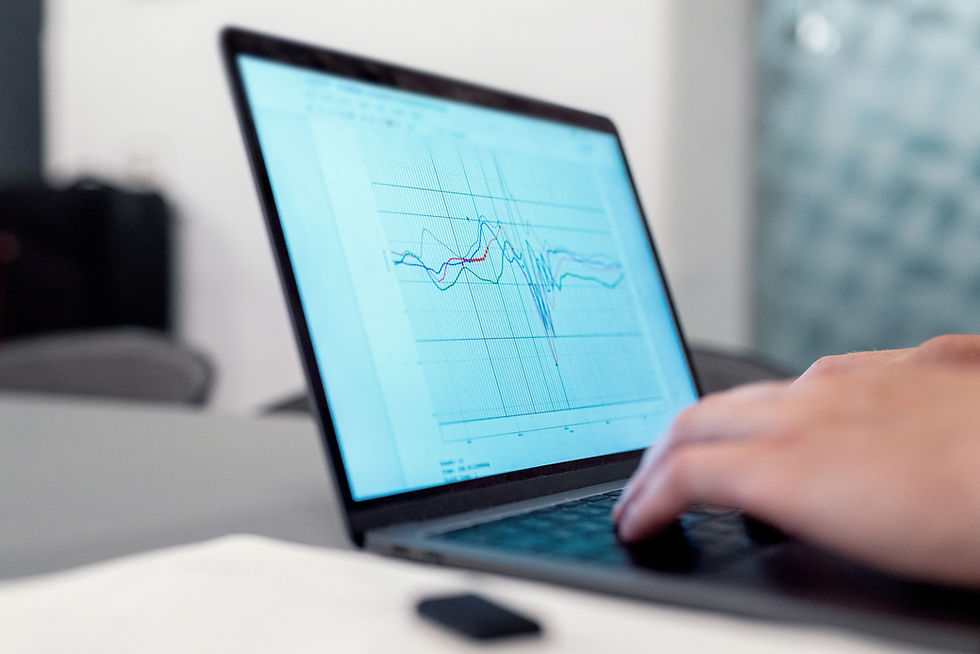Protecting Your Wealth from Inflation
- Ryan M. Vogel, CFP®

- Nov 13, 2024
- 4 min read
Updated: Nov 20, 2024
Key Takeaways

Inflation is slowing but remains a concern, especially for retirees and others on a fixed income.
Proper asset allocation and diversification are key to safeguarding assets against inflation.
Tax efficiency and long-term planning are crucial for maintaining purchasing power in the face of inflation.
Lately, the fast-rising cost of everything is a constant topic of conversation. Inflation (the overall rise in prices over time) can be difficult to manage because we tend to remember “what things used to cost” and anchor to those historical price points. During COVID, prices changed dramatically in a noticeably short period and we’re still adjusting. After several decades of low inflation, paying $4 for a gallon of milk and $15 for a cheeseburger can be jarring!
On the bright side, inflation is continuing to slow. The recent government data for July shows inflation rising at 2.9% annualized vs. 9% annualized in mid-2022. It's hard to adjust to higher prices when we’ve had such a low inflationary period for so many decades, including 2% or less in the decade before the pandemic.
Inflation remains higher than normal because we’re still working through the after-effects of COVID when the normal market dynamics of supply and demand were completely disrupted. Now that supply chains are working again and the supply of goods and services has nearly caught up to demand, prices aren’t rising as fast.

Housing prices have surged in recent years. Post-COVID, nearly one-third of employees are working from home either part-time or full-time, shifting the demand for housing. Many city residents, having sold their apartments and have cash on hand, are moving to the suburbs and making all-cash offers on more affordable homes. This has led to a significant increase in demand and a decrease in housing supply, pushing prices up. Even though mortgage rates are beginning to decrease, the limited availability of homes will likely keep prices high for the foreseeable future.
Inflation is especially problematic for retirees as it erodes their ability to purchase things they need for everyday living. Here are some ideas to protect your financial plan from the damaging effects of inflation.
How To Safeguard Assets And Retirement Income From Inflation
1. Allocate Assets Properly.
Many people, especially retirees, have a mismatch between their overall investment allocation, risk tolerance, and needs. Regardless of age, you can’t outpace inflation without taking a certain amount of risk in your investments. It’s not just about portfolio returns; it’s about returns above inflation. Sure, stocks can be volatile, but the average long-term returns for US large company stocks are 10.5% per year. You can’t have all your money in “safe” Treasuries or money markets and expect to receive a return large enough to outpace inflation.
If you lock yourself into a 1-year CD, you’re simply trading one kind of investment risk for

another (stock market risk for shortfall and reinvestment risk). Reinvestment risk refers to the chance that, when your CD matures in the future, you might not be able to reinvest the money at the same or higher return than what you're currently earning. Shortfall risk occurs when you don’t earn enough return because you haven’t taken enough risk. However, a diversified portfolio of stocks and bonds can help you preserve your purchasing power and protect against the effects of inflation over time.
2. Diversify Your Portfolio Through The Following Asset Classes:
a) Treasury Inflation-Protected Securities (TIPS) are U.S. Treasury Bonds whose face value is pegged to the Consumer Price Index and adjusted to changes in the inflation rate. We typically utilize TIPS in bond-heavy conservative portfolios. However, in portfolios with a higher amount of stock, TIPS aren’t as essential because we are already obtaining inflation protection through the stock side of the portfolio.
b) Commercial Real Estate (Through Real Estate Investment Trusts) can be an excellent hedge against inflation because property owners can usually increase rents charged to tenants to keep pace with rising prices. While many equate commercial real estate with office buildings, this asset class also includes apartment buildings, storage facilities, data warehouses, and logistics centers, of which many are doing very well in this economy.

c) Foreign Investments. A globally diversified stock portfolio protects you from down years in the U.S. stock market and times when U.S. inflation is running high. Many people purchase goods made in foreign countries by foreign corporations. Having investments in different countries with different currencies is a great way to protect your purchasing power.
d) Gold And Cryptocurrency? Conventional wisdom is that gold is a great store of value and thus, a good hedge against inflation. But a gold bar doesn’t produce income and has no future earnings potential. It is only worth what someone else is willing to pay for it. Further, if you look at the historical prices of gold relative to changes in the rate of inflation there is little correlation hence it’s not a reliable way to hedge inflation risks. The same rationale holds for cryptocurrency.
3. Seeking Tax Efficiency always helps you keep more in your pocket, and every bit is needed when inflation rears its ugly head. The type of tax planning we do for our clients is extensive. For example, we evaluate your projected tax brackets from now through the rest of your life, in each calendar year, and determine which years are better than others to realize income.
Conclusion
Inflation can be nerve-wracking, especially when you rely upon your savings to generate your monthly income. But as with the stock market, ignore the headlines and never lose sight of the fundamentals of your plan. As always, we’re here when you need us to review or finetune your plan.
RYAN M. VOGEL, CFP® is the CHIEF PLANNING OFFICER, PARTNER at Novi Wealth




